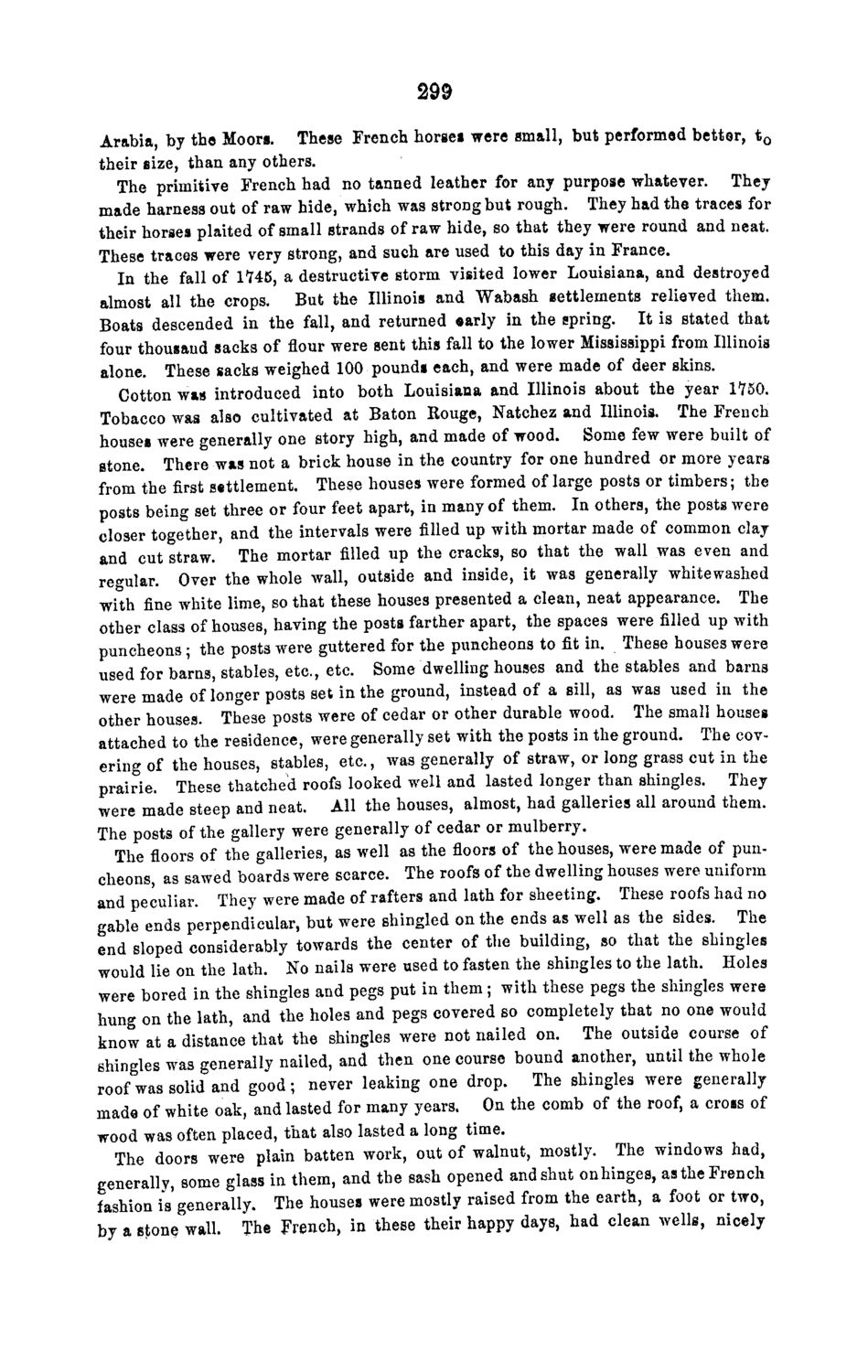| |
| |
Caption: Board of Trustees Minutes - 1868
This is a reduced-resolution page image for fast online browsing.

EXTRACTED TEXT FROM PAGE:
299 Arabia, by the Moors. These French horses were small, but performed better, t 0 their size, than any others. The primitive French had no tanned leather for any purpose whatever. They made harness out of raw hide, which was strong but rough. They had the traces for their horses plaited of small strands of raw hide, so that they were round and neat. These traces were very strong, and such are used to this day in France. In the fall of 1745, a destructive storm visited lower Louisiana, and destroyed almost all the crops. But the Illinois and Wabash settlements relieved them. Boats descended in the fall, and returned «arly in the spring. It is stated that four thousaud sacks of flour were sent this fall to the lower Mississippi from Illinois alone. These sacks weighed 100 pounds each, and were made of deer skins. Cotton was introduced into both Louisiana and Illinois about the year 1*750. Tobacco was also cultivated at Baton Rouge, Natchez and Illinois. The French houses were generally one story high, and made of wood. Some few were built of stone. There was not a brick house in the country for one hundred or more years from the first settlement. These houses were formed of large posts or timbers; the posts being set three or four feet apart, in many of them. In others, the posts were closer together, and the intervals were filled up with mortar made of common clay and cut straw. The mortar filled up the cracks, so that the wall was even and regular. Over the whole wall, outside and inside, it was generally whitewashed with fine white lime, so that these houses presented a clean, neat appearance. The other class of houses, having the posts farther apart, the spaces were filled up with puncheons; the posts were guttered for the puncheons to fit in. These houses were used for barns, stables, etc., etc. Some dwelling houses and the stables and barns were made of longer posts set in the ground, instead of a sill, as was used in the other houses. These posts were of cedar or other durable wood. The small houses attached to the residence, were generally set with the posts in the ground. The covering of the houses, stables, etc., was generally of straw, or long grass cut in the prairie. These thatched roofs looked well and lasted longer than shingles. They were made steep and neat. All the houses, almost, had galleries all around them. The posts of the gallery were generally of cedar or mulberry. The floors of the galleries, as well as the floors of the houses, were made of puncheons, as sawed boards were scarce. The roofs of the dwelling houses were uniform and peculiar. They were made of rafters and lath for sheeting. These roofs had no gable ends perpendicular, but were shingled on the ends as well as the sides. The end sloped considerably towards the center of the building, so that the shingles would lie on the lath. No nails were used to fasten the shingles to the lath. Holes were bored in the shingles and pegs put in them; with these pegs the shingles were hung on the lath, and the holes and pegs covered so completely that no one would know at a distance that the shingles were not nailed on. The outside course of shingles was generally nailed, and then one course bound another, until the whole roof was solid and good; never leaking one drop. The shingles were generally made of white oak, and lasted for many years. On the comb of the roof, a cross of wood was often placed, that also lasted a long time. The doors were plain batten work, out of walnut, mostly. The windows had, generally, some glass in them, and the sash opened and shut onhinges, as the French fashion is generally. The houses were mostly raised from the earth, a foot or two, by a stone wall. The French, in these their happy days, had clean wells, nicely
| |